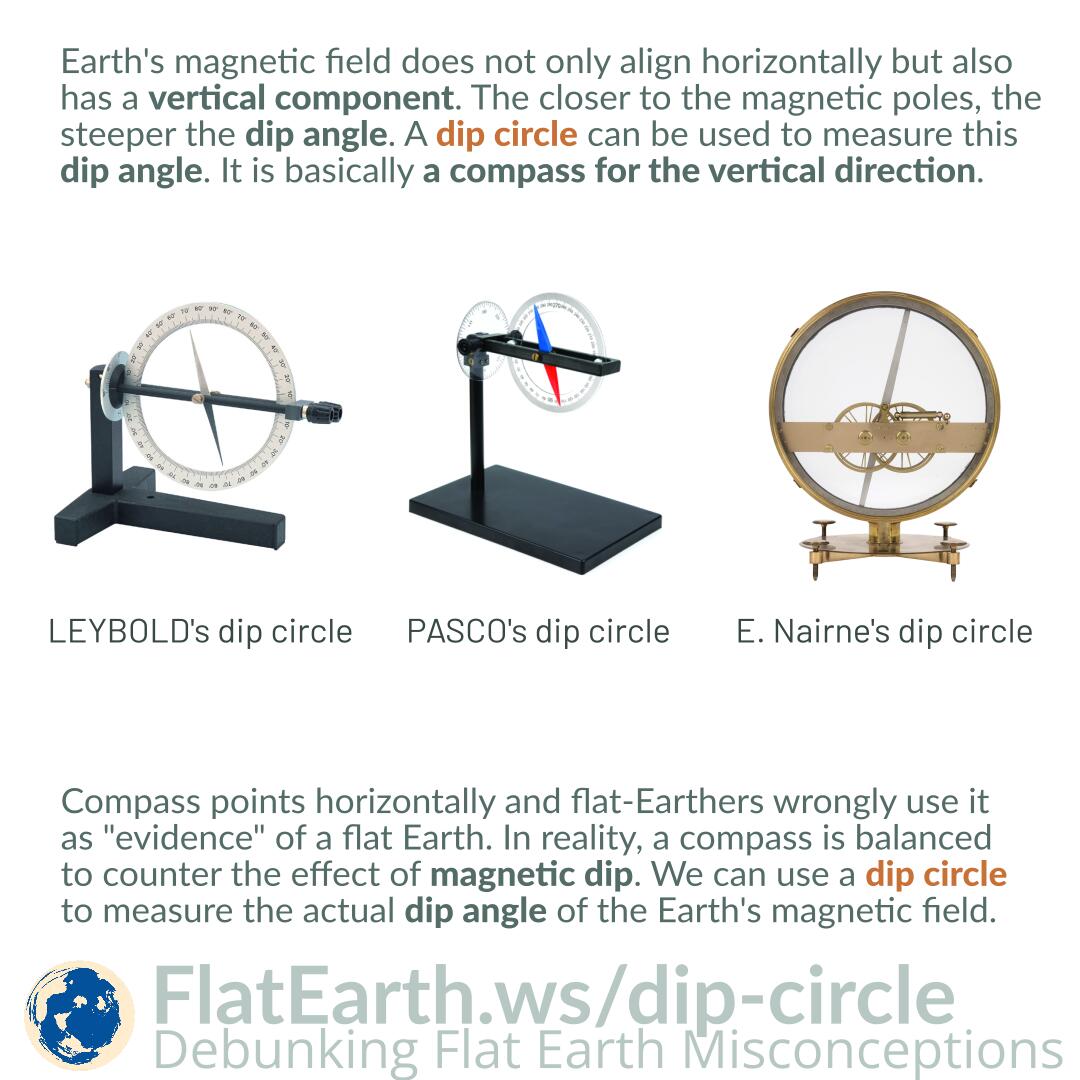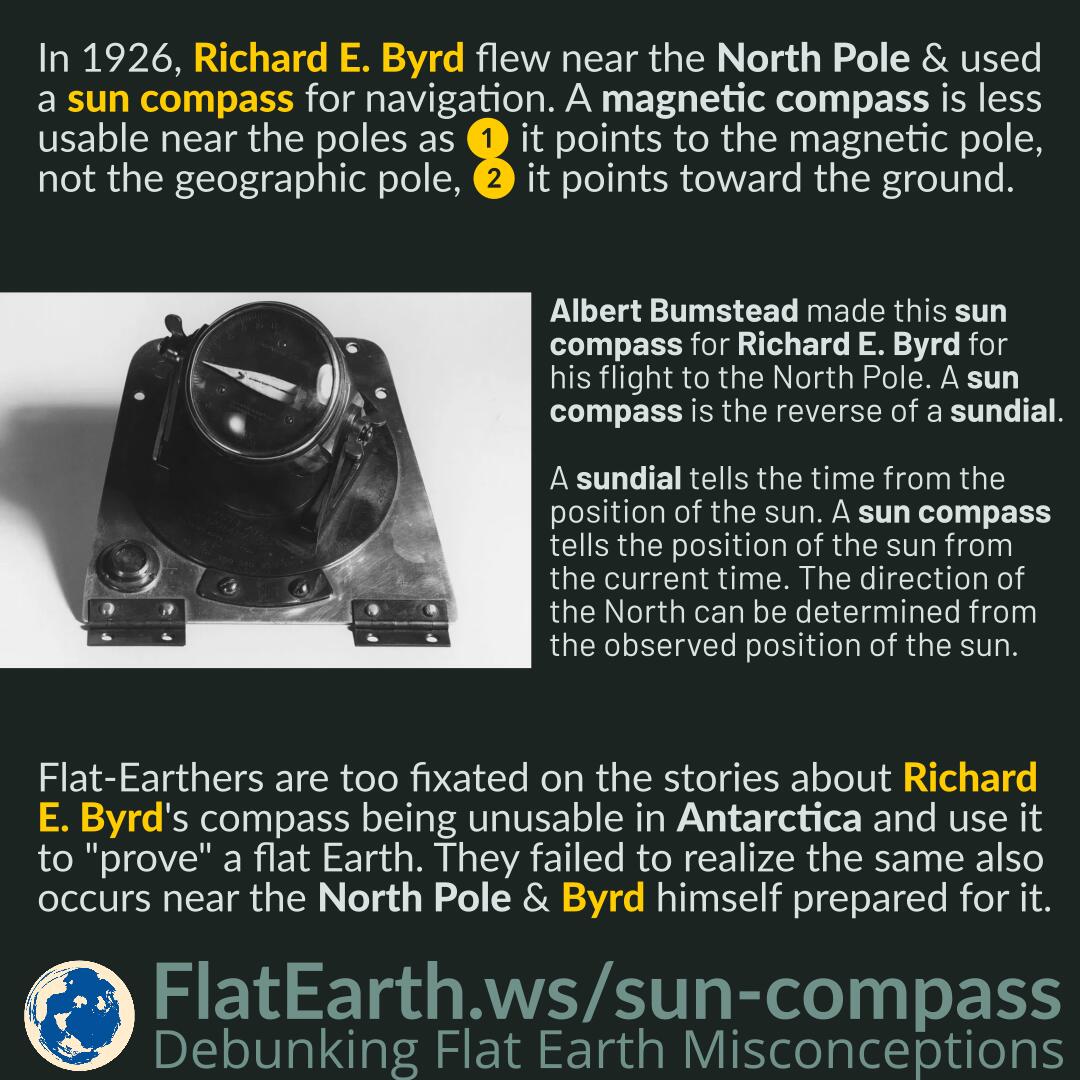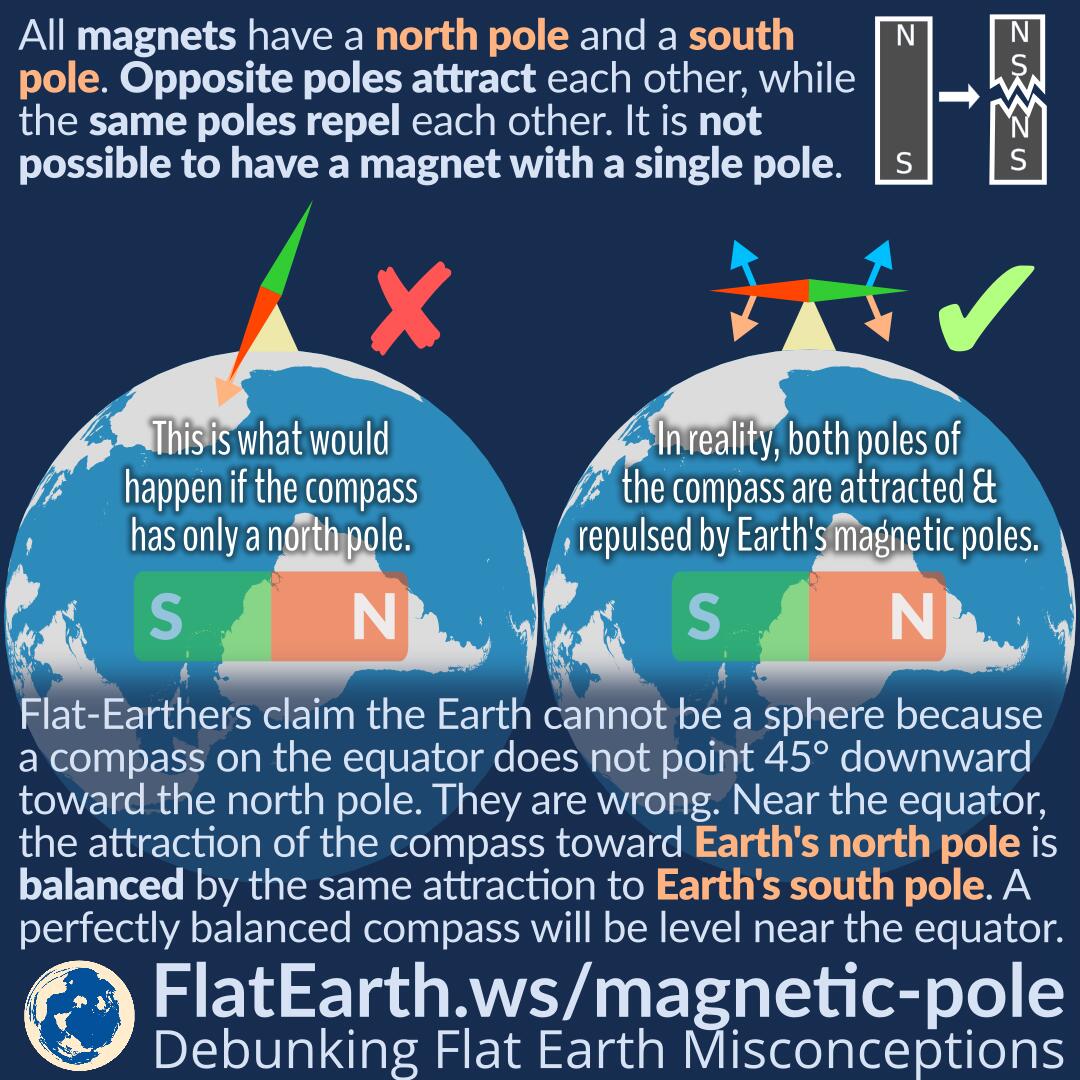Earth’s magnetic field does not only align horizontally but also has a vertical component. The closer to the magnetic poles, the steeper the dip angle. A dip circle can be used to measure this dip angle. It is basically a compass for the vertical direction.
Compass points horizontally and flat-Earthers wrongly use it as “evidence” of a flat Earth. In reality, a compass is balanced to counter the effect of magnetic dip. We can use a dip circle to measure the actual dip angle of the Earth’s magnetic field.





